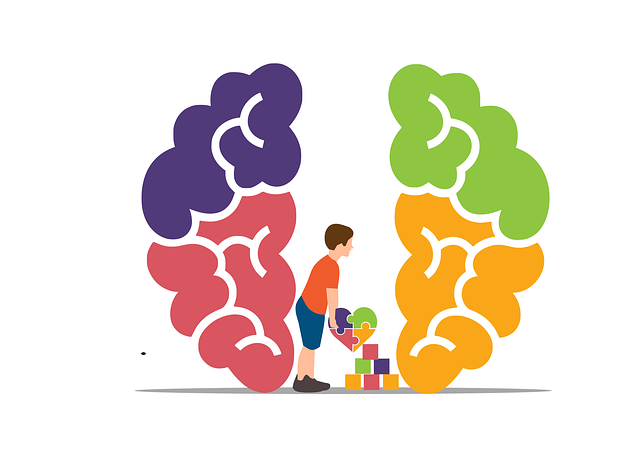Lakewood Abuse Survivors Therapy (LAST) offers a compassionate approach to healing trauma and abuse through positive thinking exercises, combining evidence-based techniques with tailored strategies. By setting aside 15 minutes daily for mindfulness, gratitude practices, and reframing negative thoughts, survivors gain inner strength, emotional awareness, and resilience. This holistic method not only surmounts immediate challenges but also fosters long-term mental health, improved social skills, and a brighter future, empowering individuals to navigate their healing journeys effectively. Regular self-assessment tracks progress in emotional well-being, leading to enhanced life satisfaction and adaptability.
Positive thinking exercises have emerged as a powerful tool for healing, particularly in trauma recovery. This article explores the transformative potential of such practices through the lens of the Lakewood Abuse Survivors Therapy (LAST) approach. We’ll guide you through understanding positive thinking’s impact, implementing a practical exercise step-by-step, overcoming common challenges, and measuring success. By integrating these strategies, individuals can harness the power of positive thinking to navigate their healing journey effectively.
- Understanding Positive Thinking and its Impact on Healing
- The Lakewood Abuse Survivors Therapy (LAST) Approach
- Step-by-Step Guide to Implementing a Positive Thinking Exercise
- Overcoming Challenges and Common Obstacles in LAST
- Measuring Success and Long-Term Benefits of Positive Thinking
Understanding Positive Thinking and its Impact on Healing

Positive thinking is a powerful tool for healing, especially for individuals who have experienced trauma or abuse, such as those seeking therapy at Lakewood Abuse Survivors. By cultivating an optimistic mindset, survivors can develop inner strength and foster self-awareness exercises that empower them to overcome challenging experiences. This process allows for mental wellness coaching programs’ development, enabling individuals to navigate their journeys with resilience and hope.
Understanding the impact of positive thinking is crucial in therapeutic settings. It encourages a shift from negative thought patterns to constructive ones, promoting emotional healing and personal growth. Through dedicated exercises, survivors can learn to reframe their perspectives, reducing the hold that traumatic memories might have on their lives. This transformation fosters mental wellness, enhances coping mechanisms, and paves the way for a more fulfilling and positive future.
The Lakewood Abuse Survivors Therapy (LAST) Approach

The Lakewood Abuse Survivors Therapy (LAST) Approach is a powerful method designed to support individuals who have experienced trauma or abuse. This therapeutic strategy focuses on empowering survivors to cultivate positive thinking and build inner strength. By combining evidence-based techniques with a compassionate and supportive environment, LAST aims to promote emotional well-being and mental health awareness among its participants.
The approach prioritizes each survivor’s unique journey, offering tailored strategies to navigate the challenges they face. Through various exercises and activities, individuals learn to challenge negative thought patterns, fostering resilience and hope. LAST encourages active participation, where survivors share their stories, engage in group discussions, and discover effective ways to manage trauma-related symptoms. This holistic approach not only addresses the mental health aspects but also emphasizes the development of inner strength, enabling participants to embrace a brighter future.
Step-by-Step Guide to Implementing a Positive Thinking Exercise

Implementing a positive thinking exercise can be a transformative process for individuals seeking emotional healing, particularly those who have experienced trauma or abuse like those supported by Lakewood Abuse Survivors Therapy (LAST). This step-by-step guide offers practical strategies to integrate this powerful tool into daily routines.
Begin by setting aside dedicated time each day—even just 15 minutes—for your positive thinking practice. Find a quiet, comfortable space where you won’t be disturbed. Start with a brief moment of mindfulness or deep breathing to center yourself. Next, reflect on the day’s events, identifying at least three aspects you’re grateful for. This simple act of recognition can shift your focus towards the positives in life. Write these gratitudes down in a mental wellness journal, which serves as a powerful tool for tracking progress and fostering emotional healing processes. From there, challenge negative thoughts that arise by reframing them with more positive alternatives. This journaling exercise guidance encourages a deeper connection with one’s emotions and fosters the cultivation of positive thinking, ultimately enhancing mental wellness.
Overcoming Challenges and Common Obstacles in LAST

Overcoming challenges is a significant aspect of personal growth and recovery, especially for individuals who have experienced trauma or abuse. In the context of Lakewood Abuse Survivors Therapy (LAST), clients often face unique obstacles on their journey towards healing. Common hurdles include fear, anxiety, and self-doubt—emotions that can severely impede progress when left unaddressed.
The implementation of positive thinking exercises is a powerful tool to navigate these challenges. By focusing on self-care routine development and inner strength, individuals can enhance their resilience. Social skills training becomes more accessible as confidence grows, enabling survivors to build support networks and foster meaningful connections. This holistic approach ensures that clients not only overcome immediate obstacles but also develop the necessary tools for long-term mental health and personal growth.
Measuring Success and Long-Term Benefits of Positive Thinking

Measuring success in positive thinking exercises is an essential aspect often overlooked. Unlike tangible goals, the progress in emotional well-being is subtle and subjective, making it challenging to quantify. However, through regular self-assessment and feedback from therapists or support groups like Lakewood Abuse Survivors Therapy, individuals can track their improvements. This process involves identifying shifts in perspective, increased resilience during stressful situations, and better emotional regulation.
Over time, the benefits of positive thinking extend far beyond immediate improvements in mood. Research suggests that cultivating a positive mindset enhances overall life satisfaction, reduces the risk of relapsing into negative thought patterns, and promotes better stress management. The skills acquired through these exercises translate into real-life advantages, fostering resilience building and enabling individuals to navigate challenges with greater ease and adaptability.














